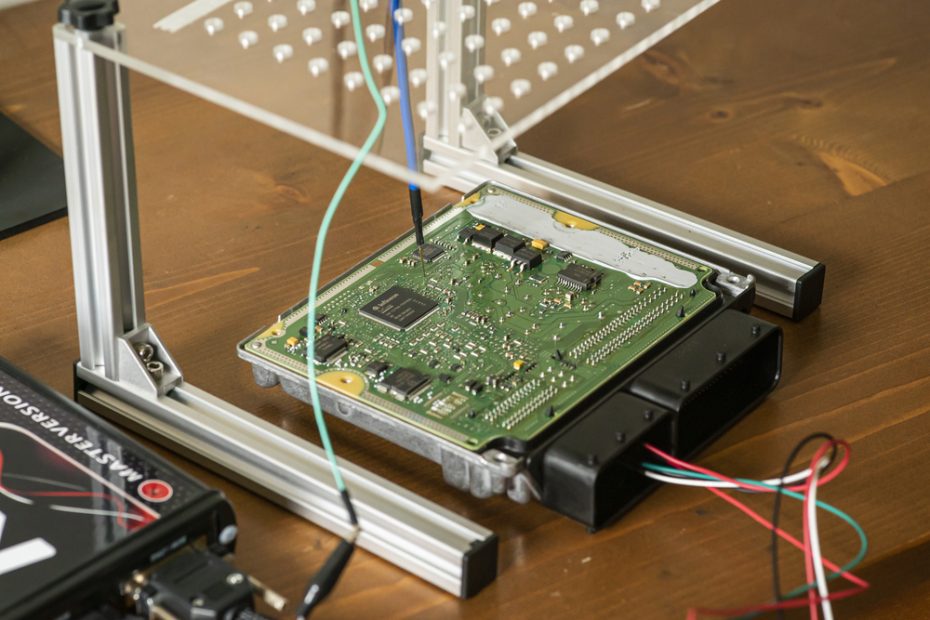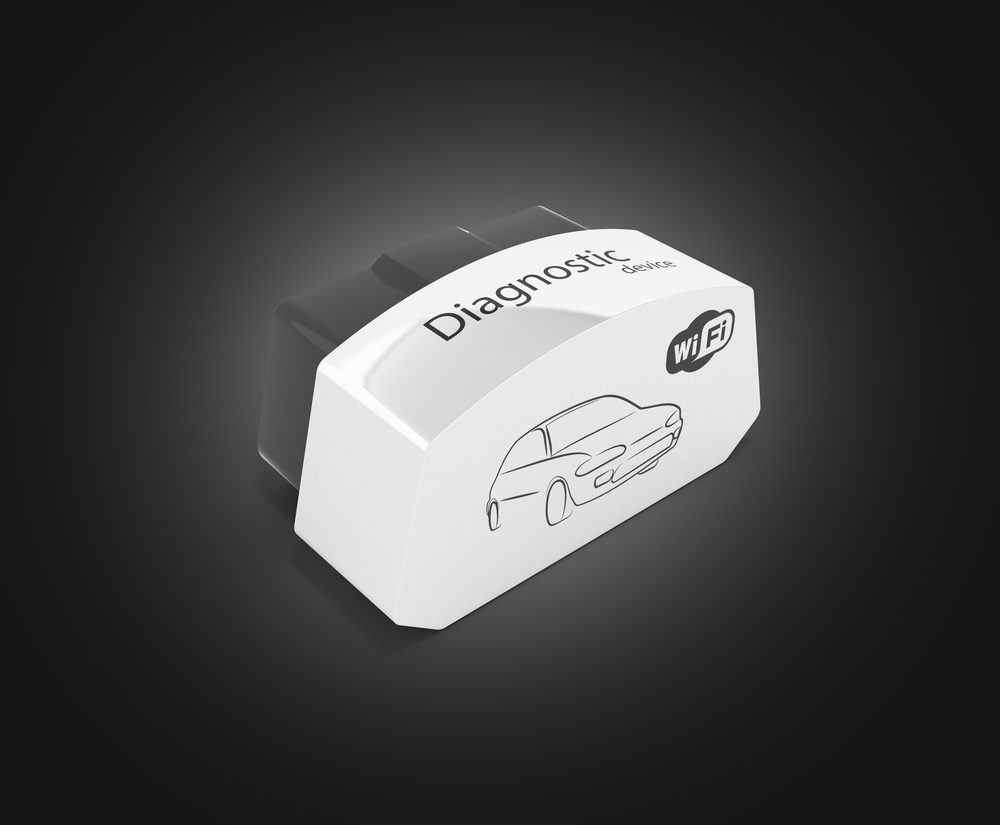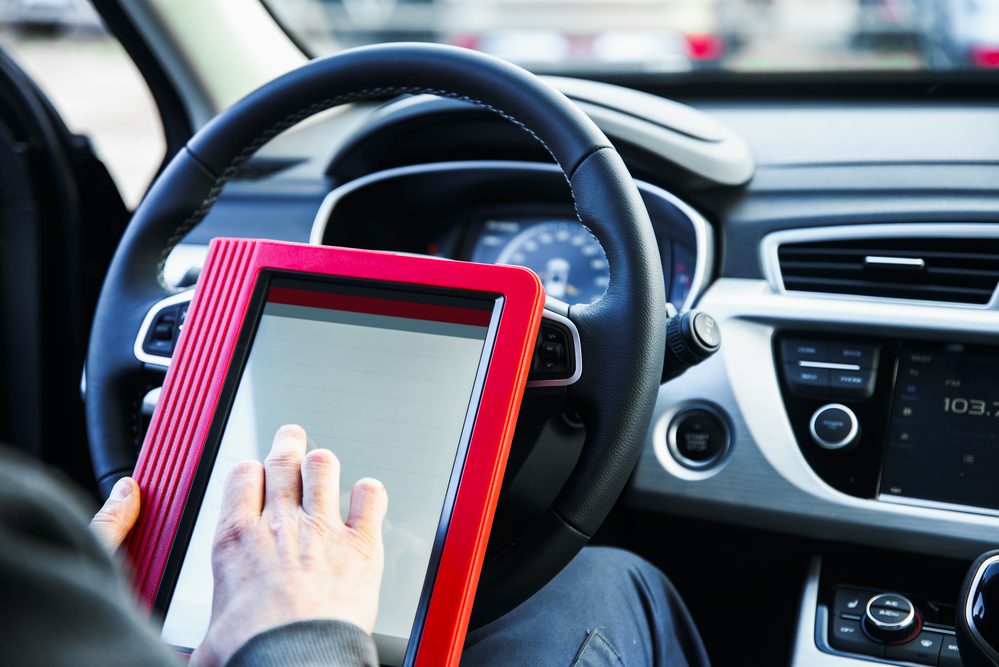How is ECU programming done?
ECU programming refers to the process of reconfiguring or updating the software that controls the Engine Control Unit (ECU) in a vehicle. The ECU is responsible for managing various aspects of an engine’s performance, including fuel injection, ignition timing, turbo boost, and more. Programming the ECU allows for customization and optimization of these settings, which can enhance the vehicle’s performance, fuel efficiency, and overall driving experience.
The Basics of ECU Programming
ECU programming typically involves connecting a computer or diagnostic tool to the vehicle’s OBD-II port, which is usually located underneath the dashboard. This connection allows access to the ECU’s software, enabling the programmer to read, modify, and write new data to the ECU.
Before making any changes, it is crucial to create a backup of the existing ECU software. This backup serves as a safety net, allowing the original configuration to be restored if necessary. Once the backup is created, the programming process can proceed.
The Importance of ECU Programming
ECU programming provides several benefits for vehicle owners. One of the primary advantages is improved performance. By adjusting the ECU settings, it is possible to optimize the engine’s power output, torque delivery, and throttle response. This can result in enhanced acceleration, better towing capabilities, and an overall smoother driving experience.
Another significant benefit of ECU programming is increased fuel efficiency. Fine-tuning the ECU can lead to improved combustion, reduced engine friction, and more efficient use of fuel. As a result, drivers can experience savings on their fuel costs while maintaining or even enhancing the vehicle’s performance.
In addition to performance and fuel efficiency, ECU programming can also unlock certain features and capabilities that are not enabled by default. This can include features like launch control, rev limiters, and even customized engine maps for specific driving conditions or personal preferences.
The Process of ECU Programming
ECU programming typically involves the following steps:
- Data Reading: The existing ECU software is read and backed up.
- Data Modification: The programmer analyzes the data and makes necessary changes to optimize performance, fuel efficiency, or other desired parameters.
- Data Writing: The modified data is written back to the ECU’s memory, replacing the original software.
- Verification and Testing: The vehicle is tested to ensure that the changes made during programming have been successfully implemented and do not cause any issues.
ECU programming should be carried out by experienced professionals or individuals with proper knowledge to ensure the process is done correctly and safely.
Does ECU need coding?
ECU (Engine Control Unit) is a vital component in modern vehicles that controls various aspects of the engine’s performance. When it comes to ECU programming, the question often arises: does the ECU need coding?
The Importance of ECU Coding
Yes, in most cases, the ECU needs coding to function properly. ECU coding involves configuring the software within the unit to match the specific requirements and characteristics of the vehicle it is installed in. This ensures optimal performance, efficiency, and compatibility.
Why is ECU Coding Necessary?
ECU coding is necessary for several reasons:
- Vehicle Identification: ECU coding helps identify the vehicle accurately. It ensures that the ECU is programmed to work with the particular make, model, and year of the vehicle. This prevents compatibility issues and potential damage to the engine.
- Customization: Through coding, various parameters can be adjusted to suit specific requirements. This includes factors such as fuel-air mixture, ignition timing, and torque control. Customizing these parameters can enhance performance, fuel efficiency, or cater to any modifications made to the vehicle.
- Updates and Fixes: ECU coding allows for software updates and fixes to be applied when necessary. Just like any other software, ECU software can have bugs or require improvements. Coding enables manufacturers and technicians to address these issues and enhance the performance and reliability of the vehicle.
ECU coding ensures optimal performance, compatibility, and customization for the specific vehicle.
Coding Techniques
In the process of ECU coding, different techniques are used, such as:
- Flash Programming: This involves updating the ECU software by rewriting the data stored in the unit’s memory via a diagnostic tool. It is a common method used by manufacturers and professional technicians.
- Immobility Coding: This type of coding is specifically related to the vehicle’s immobilizer system. It ensures that the ECU can communicate with the immobilizer and allow the engine to start only with the correct key or key fob.
How do I reprogram my ECU in my car?
Reprogramming the Engine Control Unit (ECU) in your car can have a significant impact on its performance and efficiency. Whether you want to increase horsepower, improve fuel economy, or make other modifications, reprogramming the ECU is often necessary. Here’s a step-by-step guide on how to reprogram your ECU:
1. Gather the necessary tools
Before you start, make sure you have the right tools for the job. You’ll need a laptop or computer with ECU programming software, an OBD-II cable, and a reliable internet connection.
2. Locate the ECU
The ECU is usually found under the dashboard or bonnet of your car, depending on the make and model. Consult your vehicle’s manual or do some online research to find the exact location.
3. Connect the OBD-II cable
Connect one end of the OBD-II cable to the ECU port and the other end to your computer. Ensure that the connection is secure to avoid any disruptions during the reprogramming process.
4. Launch the ECU programming software
Open the ECU programming software on your computer. Depending on the software you’re using, there may be specific steps to follow for connecting to your car’s ECU. Refer to the software’s instructions for guidance.
5. Identify the ECU
The software will automatically identify the ECU installed in your car. This information is crucial as it ensures that the correct programming files and parameters are used.
6. Back up the existing ECU data
It’s essential to back up the current ECU data before making any changes. This backup will serve as a safety net in case anything goes wrong during the reprogramming process.
7. Select the desired modifications
Choose the specific modifications you want to make to your car’s ECU. This may include adjusting fuel maps, ignition timing, or optimizing other parameters based on your requirements.
8. Upload the new ECU program
Once you’ve selected the desired modifications, the software will guide you through the process of uploading the new ECU program to your car. Ensure that you follow the instructions carefully to avoid any potential errors.
9. Test the changes
After the new program has been uploaded, it’s important to test the changes to ensure everything is working correctly. Take your car for a test drive and monitor its performance and fuel efficiency.
10. Monitor and fine-tune
Keep an eye on the performance of your car after reprogramming the ECU. If needed, you can further fine-tune the modifications to achieve the desired results.
Remember: ECU reprogramming requires technical knowledge and expertise. If you’re not confident in your abilities, it’s best to seek professional help to avoid any potential damage to your vehicle.
Can I change ECU without programming?
Changing the Engine Control Unit (ECU) without programming it can be a bit challenging. The ECU is essentially the brain of your vehicle, responsible for controlling various engine functions. When replacing the ECU, it needs to be programmed in order for it to communicate properly with the rest of the vehicle’s systems.
Why is ECU programming necessary?
ECU programming ensures that the new unit is configured to work seamlessly with your vehicle. It involves transferring data and settings from the old ECU to the new one, including information about the engine, emissions controls, fuel injection, and more. Without programming, the new ECU may not function correctly or even communicate with other vital components of your vehicle.
How is ECU programming done?
ECU programming is typically performed using specialized software and equipment by qualified professionals. This process involves connecting the vehicle to a computer or diagnostic tool that can read and write data to the ECU. The technician will then transfer the necessary information to the new ECU, ensuring compatibility and proper functioning.
It is important to note that ECU programming should be carried out by experienced technicians. They have the knowledge and expertise to ensure the correct programming procedure is followed, preventing potential issues or damage to your vehicle.
“ECU programming is a critical step when replacing the ECU. It ensures that the new unit is properly configured and compatible with your vehicle’s systems.”
Can I program the ECU myself?
While there are aftermarket tools available that claim to allow DIY ECU programming, it is not recommended for inexperienced individuals. ECU programming requires in-depth knowledge of the specific vehicle model, as well as access to proper software and diagnostic equipment.
Attempting to program the ECU without the necessary expertise can lead to errors, incorrect settings, or even permanent damage to the ECU or other vital components of your vehicle. It is best to leave this task to trained professionals who understand the intricacies of ECU programming.
Conclusion
To ensure a smooth and successful replacement of your ECU, programming is essential. Although it may be tempting to try DIY methods, it is strongly advised to seek the assistance of qualified technicians who have the knowledge and tools to perform ECU programming accurately and safely.
Overall, remember that ECU programming plays a crucial role in maintaining the performance and functionality of your vehicle, preventing any potential issues that may arise from an improperly programmed unit.
Where can I program my ECU?
When it comes to programming your Engine Control Unit (ECU), you have several options available. Let’s take a look at some of the places where you can program your ECU:
1. Dealerships and Repair Shops
If you prefer professional assistance, you can visit authorized dealerships or reputable repair shops. They often have the necessary equipment and expertise to program your ECU accurately. Keep in mind that this option may be more expensive compared to other alternatives.
2. DIY with OBD-II Scanners
For those who like to take matters into their own hands, programming your ECU can be done using OBD-II scanners. These devices connect to your vehicle’s OBD-II port, allowing you to access and modify certain parameters of the ECU. However, it’s crucial to have a good understanding of the process and potential risks involved.
3. Online ECU Programming Services
Online ECU programming services offer a convenient option for ECU programming. These services typically require you to send your ECU to their facility, where their technicians will program it according to your preferences. Once programmed, they will send it back to you ready to install.
4. ECU Tuning Workshops
ECU tuning workshops specialize in performance enhancements, allowing you to optimize your vehicle’s performance parameters. These workshops have experienced tuners who can reprogram your ECU to improve power delivery, fuel efficiency, and other factors.
Remember, ECU programming requires technical knowledge and expertise. If you are not confident in your abilities, it’s always best to seek professional help to avoid any potential damage to your vehicle’s ECU or engine.
Quote: “Proper ECU programming can unlock the full potential of your vehicle’s performance.”
Here’s an example of a comparison table highlighting some aspects of different ECU programming options:
| Option | Advantages | Disadvantages |
|---|---|---|
| Dealerships and Repair Shops | Professional expertise, reliable results | Higher cost, limited customization |
| DIY with OBD-II Scanners | Cost-effective, hands-on control | Potential risks if not done correctly |
| Online ECU Programming Services | Convenience, tailored programming | Shipping time, dependency on external service |
| ECU Tuning Workshops | Performance optimization, expert advice | May void warranty, additional costs for hardware modifications |
Ultimately, the choice of where to program your ECU depends on your preferences, budget, and desired outcome. Consider your level of expertise, the complexity of the modifications you want to make, and the level of support you require.
Remember to do thorough research and consult professionals before making any decisions regarding ECU programming.
Conclusion
In summary, ECU coding is essential for optimal performance, customization, and compatibility. It ensures that the ECU software is correctly configured for the specific vehicle and enables updates and fixes to be applied when necessary. With proper coding techniques, a vehicle’s ECU can deliver improved performance and efficiency, making it an important aspect of modern engine control systems.



